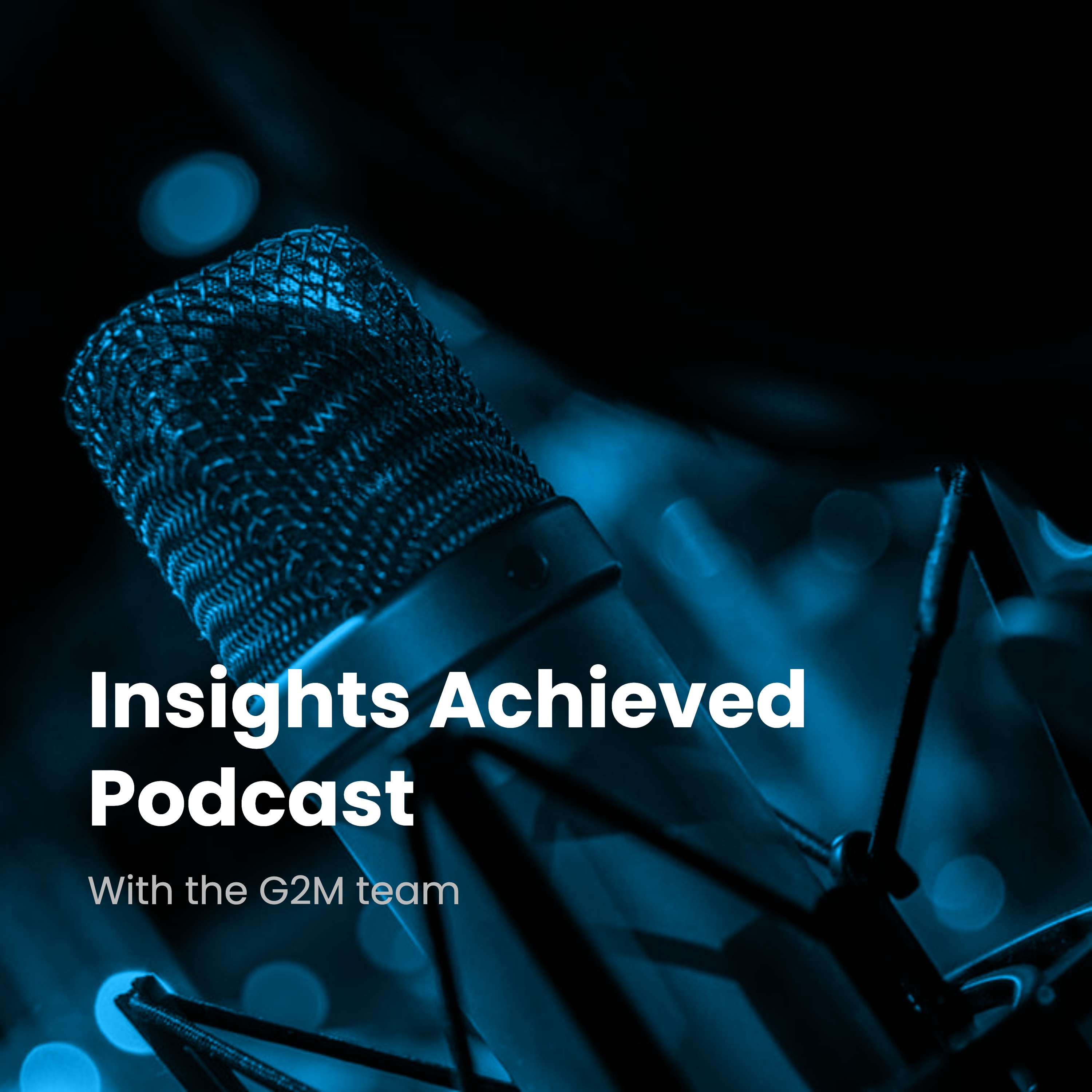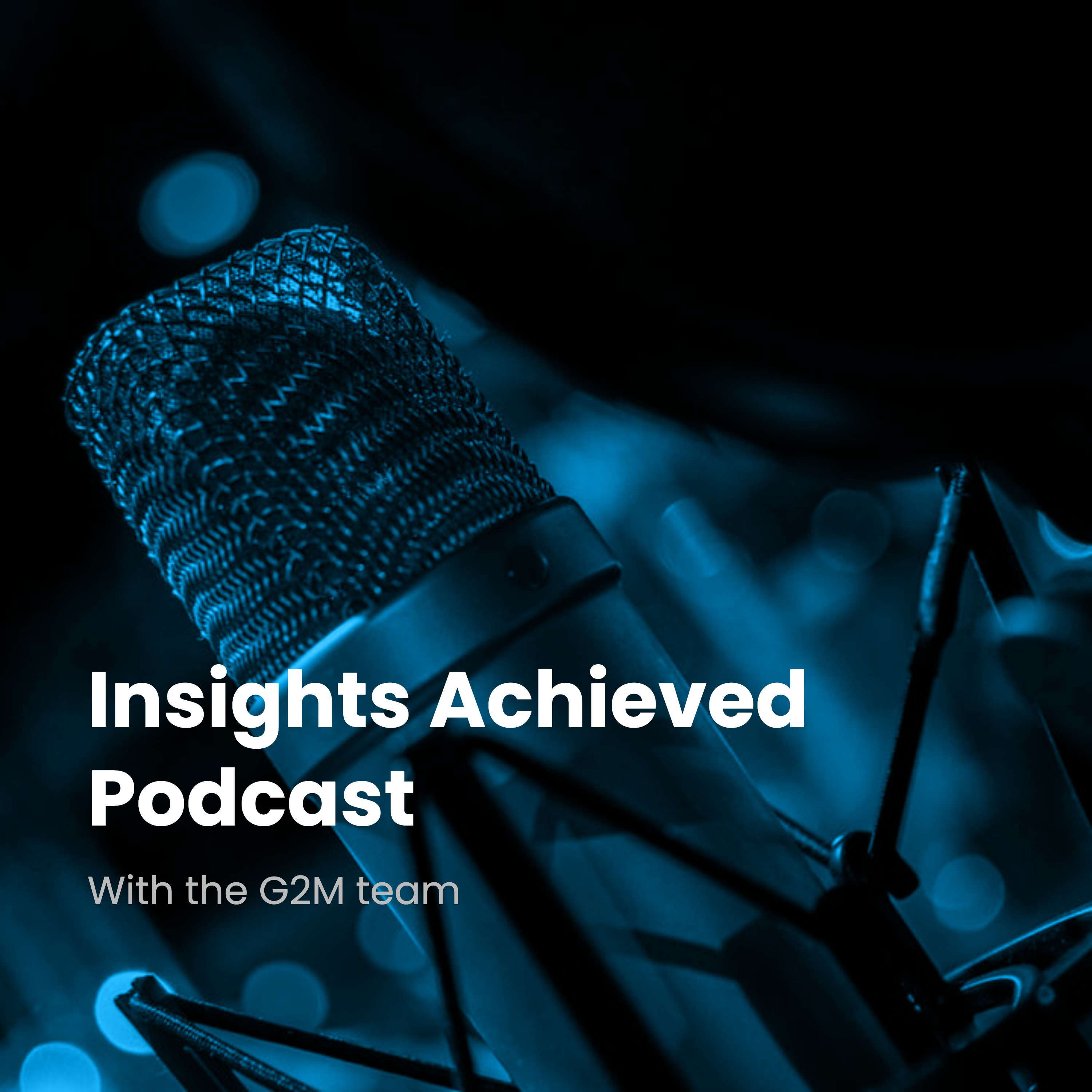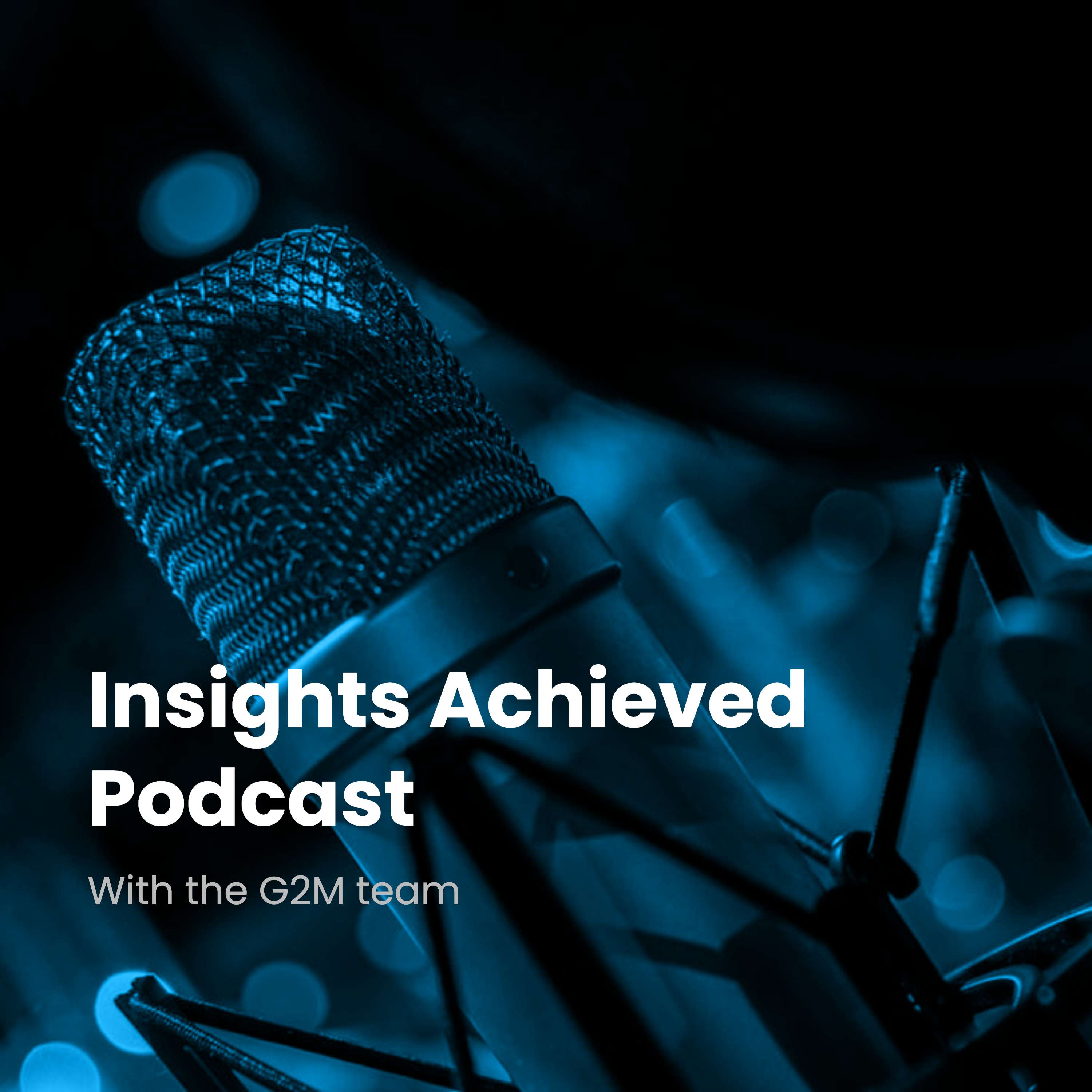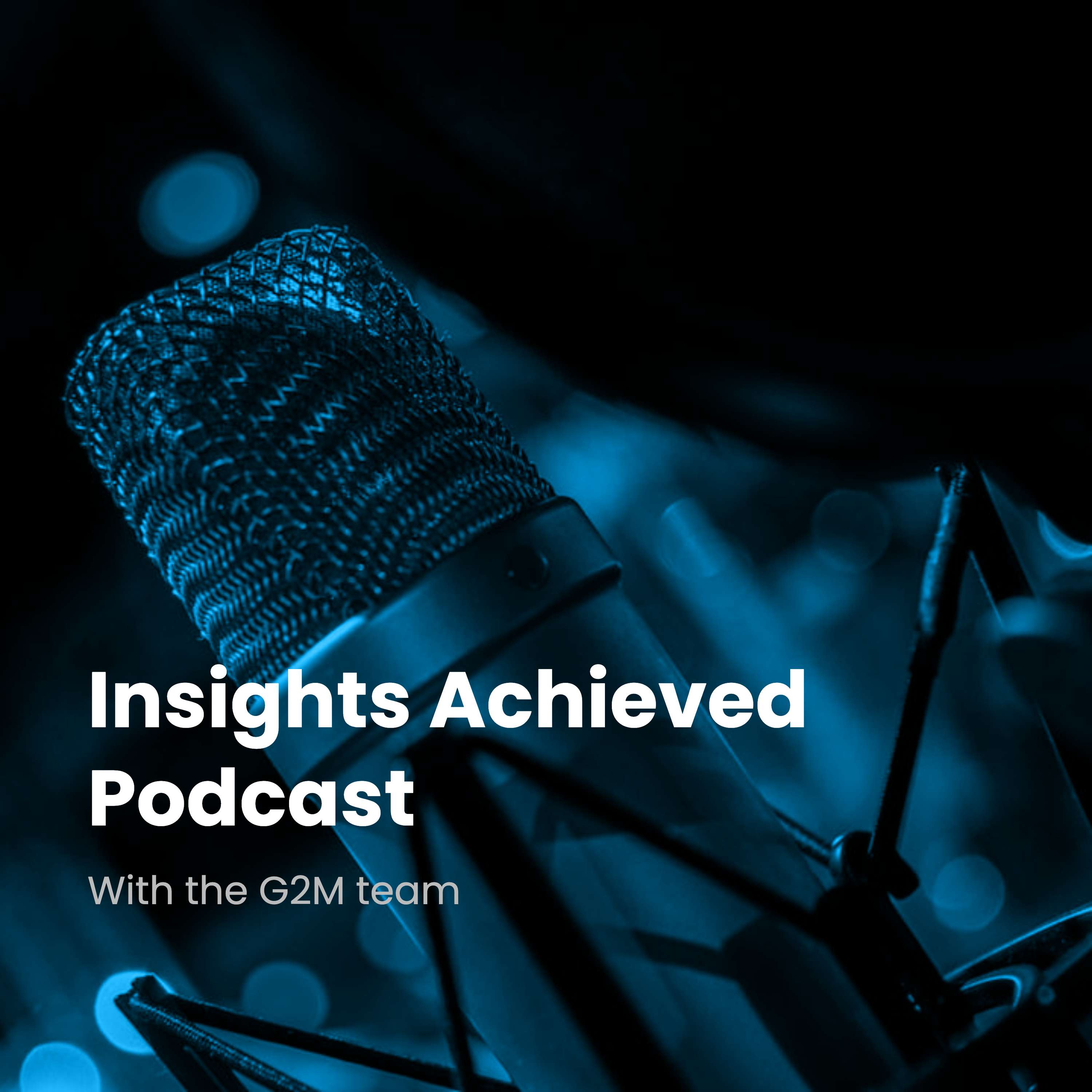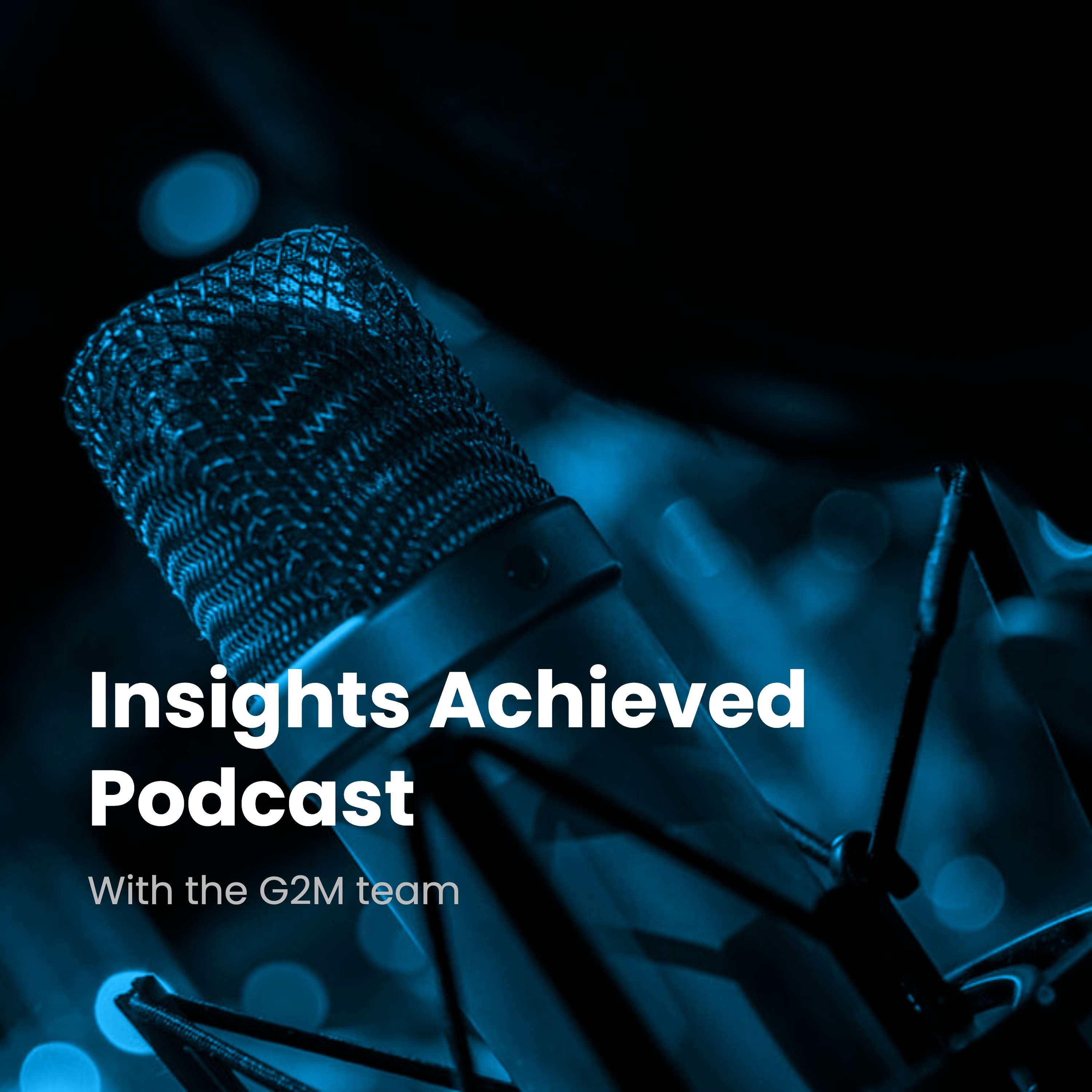Episode Transcript
[00:00:00] Speaker A: All right, so anyone in sales and marketing knows the drill. Always got to be pushing harder and doing more with less.
[00:00:07] Speaker B: That's like the motto, right?
[00:00:08] Speaker A: Yeah. Well, today we're looking at how AI can help with that.
[00:00:11] Speaker B: AI can really be a game changer, specifically with targeting.
[00:00:15] Speaker A: And we'll be focusing on propensity scoring.
[00:00:18] Speaker B: Yeah, propensity scoring.
[00:00:20] Speaker A: So for anyone who's, you know, maybe not totally up to speed on that, let's start with the basics. What is this thing?
[00:00:28] Speaker B: So it's really about, you know, moving beyond just basic stuff like a company size or industry.
[00:00:34] Speaker A: Okay.
[00:00:34] Speaker B: We're talking about using, like, tons of data points to predict how likely they are to actually buy from you.
[00:00:40] Speaker A: So, like their behavior, Right, Exactly.
[00:00:42] Speaker B: Yeah. Their behavior, their tech stack, even, like, hiring trends. Wow. And you compare all that to your existing customers, the ones you've already closed deals with, using AI to find the patterns.
[00:00:54] Speaker A: Right.
[00:00:54] Speaker B: And the result is a score. Usually it's from 0 to 1, and that tells you the likelihood of them, you know, following that same path.
[00:01:00] Speaker A: So a high score basically means, like, Cha Ching, we got a deal.
[00:01:04] Speaker B: Well, not quite that simple, but it's definitely a good sign.
[00:01:08] Speaker A: Okay. Yeah.
[00:01:08] Speaker B: Basically means they look a lot like the people who have said yes to you in the past.
[00:01:13] Speaker A: Interesting.
[00:01:14] Speaker B: Based on, like, all that historical data.
[00:01:16] Speaker A: It'S all about probability then, not like a sure thing, right?
[00:01:19] Speaker B: Exactly. But it helps you prioritize your efforts.
[00:01:23] Speaker A: Yeah, I can see that big time. But why should sales and marketing leaders actually care about this?
[00:01:29] Speaker B: Well, you know, a good propensity model can make a huge difference to your bottom line.
[00:01:34] Speaker A: Like, how huge are we talking?
[00:01:36] Speaker B: Well, let's say there's a software company. They're really struggling to convert leads.
[00:01:40] Speaker A: Happens to the best of us.
[00:01:41] Speaker B: Right. They're spending tons on marketing, the sales team is working overtime, but they're just not seeing the results.
Yeah, but then they implement a really solid propensity model.
[00:01:52] Speaker A: Okay.
[00:01:53] Speaker B: And all of a sudden, they're not wasting time chasing those low probability leads.
[00:01:57] Speaker A: Makes sense.
[00:01:58] Speaker B: Their sales team is totally laser focused on the accounts that are actually showing, you know, those strong buying signals.
[00:02:04] Speaker A: I'm listening.
[00:02:04] Speaker B: And their conversion rate, it doubles.
[00:02:06] Speaker A: Wow, that's impressive. But I've heard some not so great things about these models too.
[00:02:11] Speaker B: Oh, yeah?
[00:02:12] Speaker A: Yeah. Like they can be these black boxes. You just put data in, get a number out, but no clue what it actually means.
[00:02:19] Speaker B: Yeah, I've heard that too.
[00:02:20] Speaker A: So how do we make sure we're not, like, blindly following a number?
[00:02:24] Speaker B: Transparency. That's the key.
[00:02:25] Speaker A: Okay.
[00:02:26] Speaker B: You need a solution that not only gives you that score, but also explains the why behind it.
[00:02:32] Speaker A: The why?
[00:02:32] Speaker B: Like what are the biggest factors driving that prediction? What data points are really moving the needle?
[00:02:38] Speaker A: So it's about the story behind the score.
[00:02:40] Speaker B: Yeah, exactly. And that story, it can tell you a lot about how to close those deals.
[00:02:44] Speaker A: Okay, that makes sense. But how do we even build one of these models in the first place?
[00:02:50] Speaker B: So there are a few key steps, and the first one, Data is king.
[00:02:55] Speaker A: Of course data is king.
[00:02:57] Speaker B: You need to gather absolutely everything you've got. Your CRM data, your marketing automation data, and even third party data. Anything they can add to the picture.
[00:03:06] Speaker A: The more the merrier.
[00:03:08] Speaker B: Pretty much the more comprehensive your data set is, the better your model is going to perform.
[00:03:13] Speaker A: But it can't just be any old data.
[00:03:15] Speaker B: Yeah. Well, that brings us to the next step, which is all about choosing the right platform.
[00:03:20] Speaker A: The platform?
[00:03:21] Speaker B: Yeah. There are platforms out there like G2MS, that make this process a lot easier.
[00:03:26] Speaker A: Okay.
[00:03:26] Speaker B: You know, they have intuitive tools. You don't have to be a coding genius to use them.
[00:03:30] Speaker A: That's good to hear.
[00:03:31] Speaker B: But the key is to make sure that platform really aligns with your goals. You don't want to settle for a one size fits all solution.
[00:03:38] Speaker A: Right. We're not looking for generic insights here.
[00:03:41] Speaker B: Exactly. So you've got the data, you've got the platform. What's next?
[00:03:45] Speaker A: I'm all ears.
[00:03:46] Speaker B: Validation. This step is so often overlooked, but it's absolutely crucial.
[00:03:50] Speaker A: Okay.
[00:03:51] Speaker B: You got to scrub that data, make sure it's accurate, complete, and, you know, relevant to your goals.
[00:03:56] Speaker A: So garbage in, garbage out, right?
[00:03:58] Speaker B: Exactly. A model built on bad data is. Well, it's not going to be very helpful.
[00:04:03] Speaker A: Like a house of cards.
[00:04:05] Speaker B: Yeah, pretty much.
[00:04:05] Speaker A: So it's not just quantity, it's quality.
[00:04:07] Speaker B: Absolutely. And once your data is all squeaky clean, then you can move on to step four, which is training your model.
[00:04:15] Speaker A: Training the model. Okay.
[00:04:16] Speaker B: This is where you choose the right algorithm and you fine tune it to get those super accurate predictions. Now, this can get a little technical.
[00:04:25] Speaker A: Oh, no.
[00:04:26] Speaker B: But a good platform will, you know, kind of walk you through it.
[00:04:30] Speaker A: Okay.
[00:04:31] Speaker B: You can pick different algorithms and find the one that you know, fits your data and goals the best.
[00:04:37] Speaker A: So the platform really matters.
[00:04:38] Speaker B: It makes a huge difference.
[00:04:40] Speaker A: So we've got the data, we've picked the platform, we validated everything, trained the model. What's next?
[00:04:46] Speaker B: Now you get to make those predictions.
[00:04:48] Speaker A: The moment of truth.
[00:04:50] Speaker B: And the key here is to, you know, keep refining that model. Over time.
[00:04:55] Speaker A: Okay, so it's not just like set it and forget it?
[00:04:57] Speaker B: No, no, not at all.
[00:04:58] Speaker A: It's constantly evolving.
[00:04:59] Speaker B: Right. The market changes, new data comes in. Your model needs to be able to, you know, learn and adapt.
[00:05:07] Speaker A: Got it, yeah. Now, when you were talking about algorithms before.
[00:05:11] Speaker B: Yeah.
[00:05:11] Speaker A: Are there certain types that are, like, better for specific situations?
[00:05:16] Speaker B: So there are a ton of different algorithms out there.
[00:05:19] Speaker A: Right.
[00:05:20] Speaker B: But there's one that's especially useful for unbalanced data sets.
[00:05:24] Speaker A: Unbalanced, what does that mean?
[00:05:25] Speaker B: So let's say you're targeting a really niche market.
[00:05:28] Speaker A: Okay.
[00:05:29] Speaker B: And your positive outcomes, the closed deals, they're, you know, pretty rare.
[00:05:34] Speaker A: They don't happen very often.
[00:05:35] Speaker B: Exactly. And that can actually make it harder to train your model.
[00:05:39] Speaker A: Interesting.
[00:05:40] Speaker B: Because it doesn't have enough examples to really learn from.
[00:05:43] Speaker A: So how do you fix that?
[00:05:44] Speaker B: There's a technique called smoothie. Simone stands for synthetic minority oversampling technique.
[00:05:50] Speaker A: Okay. I'm not going to try to remember that.
[00:05:52] Speaker B: You don't have to, as long as it works. It basically creates these synthetic data points to balance out the data set.
[00:05:59] Speaker A: So it's like giving your model more to work with.
[00:06:02] Speaker B: Exactly. It gives it more positive examples to learn from.
[00:06:05] Speaker A: That's clever.
[00:06:06] Speaker B: Yeah.
[00:06:06] Speaker A: So let's say we've got our model running. It's giving us those propensity scores.
[00:06:11] Speaker B: Right.
[00:06:11] Speaker A: What do we actually do with that information?
[00:06:14] Speaker B: This is where things get really exciting.
[00:06:16] Speaker A: Okay, tell me more.
[00:06:17] Speaker B: Don't just look at the score itself. Dig deeper.
[00:06:20] Speaker A: Dig deeper.
[00:06:21] Speaker B: What are the biggest factors driving that score? What industries are converting the best? Are there any, like, specific buying signals that stand out?
[00:06:32] Speaker A: So it's about those insights, not just the number.
[00:06:34] Speaker B: Exactly. It's like having a roadmap instead of just a destination. I like that you can see where you're going and how to get there.
[00:06:41] Speaker A: Makes sense.
[00:06:41] Speaker B: Yeah.
[00:06:42] Speaker A: Now, remember those metrics we talked about earlier? Yeah. Accuracy and all that?
[00:06:46] Speaker B: Yeah.
[00:06:46] Speaker A: Those are important too. Right.
[00:06:48] Speaker B: Those are your performance indicators.
[00:06:49] Speaker A: Okay.
[00:06:50] Speaker B: They tell you how well your model is actually doing.
[00:06:53] Speaker A: So if your accuracy is low, then.
[00:06:54] Speaker B: You know something's not quite right and.
[00:06:56] Speaker A: You need to tweak things.
[00:06:57] Speaker B: Exactly.
[00:06:58] Speaker A: Okay. Now before we move on, you mentioned intent earlier.
[00:07:01] Speaker B: Yeah.
[00:07:01] Speaker A: How does that fit into all this?
[00:07:03] Speaker B: So propensity and intent, they're kind of two sides of the same coin. Think of propensity as your long term strategy.
[00:07:11] Speaker A: Long term. Okay.
[00:07:12] Speaker B: It tells you which accounts are most likely to be a good fit for.
[00:07:15] Speaker A: You based on their, like, characteristics.
[00:07:18] Speaker B: Exactly. Even if they're not actively looking to buy Right now.
[00:07:22] Speaker A: Right. So it's about who's in your target audience.
[00:07:24] Speaker B: Right.
[00:07:24] Speaker A: Whether they're, you know, ready to buy today or not.
[00:07:27] Speaker B: Exactly.
[00:07:28] Speaker A: I mean, intent is more about that immediate buying signal.
[00:07:31] Speaker B: Yeah, Intent is all about those real time signals.
[00:07:34] Speaker A: Okay.
[00:07:35] Speaker B: Like are they visiting your website, downloading content, engaging with you on social media?
[00:07:40] Speaker A: Those are good signs.
[00:07:41] Speaker B: Right. It means they're in the market and.
[00:07:42] Speaker A: Ready to buy NW So propensity is who's a good fit.
[00:07:46] Speaker B: Yep.
[00:07:46] Speaker A: And intent is who's ready to buy.
[00:07:48] Speaker B: Exactly.
[00:07:49] Speaker A: Powerful combination.
[00:07:50] Speaker B: It's like a superpower for sales and marketing.
[00:07:54] Speaker A: I like it.
[00:07:54] Speaker B: You can focus your efforts on the accounts that are both a good fit and ready to buy.
[00:07:59] Speaker A: That's smart.
[00:07:59] Speaker B: That's how you get the most bang for your buck.
[00:08:01] Speaker A: So it's not just about casting a wider net. It's like, you know exactly which fish are biting.
[00:08:06] Speaker B: Yeah. It takes a lot of the guesswork out.
[00:08:08] Speaker A: This has been really eye opening.
[00:08:11] Speaker B: Glad to hear it.
[00:08:12] Speaker A: I'm sure our listeners are going to find this super valuable.
[00:08:14] Speaker B: I hope so.
[00:08:15] Speaker A: Any, any final thoughts before we wrap up?
[00:08:17] Speaker B: I think the biggest thing to remember is that AI isn't, you know, some far off thing. It's here now.
[00:08:24] Speaker A: Right.
[00:08:24] Speaker B: And it can make a huge difference in how you approach sales and marketing.
[00:08:28] Speaker A: It's not about like replacing human intuition.
[00:08:31] Speaker B: No. It's about having more data to work.
[00:08:34] Speaker A: With so you can make better decisions.
[00:08:36] Speaker B: Exactly. Use it to understand your audience, to find those like golden opportunities and just, you know, be smarter at every step.
[00:08:44] Speaker A: And as we talked about today with propensity scoring and targeting, it's not just about the algorithms, it's about what you do with the insights.
[00:08:52] Speaker B: Absolutely. You've got to be able to translate that data into action.
[00:08:55] Speaker A: Well said. I think, I think that about covers it.
[00:08:58] Speaker B: Yeah, I think so.
[00:08:59] Speaker A: Thanks for joining us for this deep dive. To all our listeners out there, we hope you learned something new today and.
[00:09:05] Speaker B: You know, got some ideas to take back to your teams until next time.
 In this episode of the Insights Achieved Podcast, we explore the world of propensity scoring and its transformative potential for marketers. Drawing from insights in our G2M blog, we explain how propensity models predict customer behavior, enabling smarter decision-making and targeted marketing strategies. Learn how to use these models to identify high-value prospects, optimize campaigns, and drive business growth. Whether you’re an experienced marketer or new to data-driven approaches, this episode will help you harness the power of propensity scoring. This podcast episode was generated using AI combined with original ideas and content from the G2M Insights blog.
In this episode of the Insights Achieved Podcast, we explore the world of propensity scoring and its transformative potential for marketers. Drawing from insights in our G2M blog, we explain how propensity models predict customer behavior, enabling smarter decision-making and targeted marketing strategies. Learn how to use these models to identify high-value prospects, optimize campaigns, and drive business growth. Whether you’re an experienced marketer or new to data-driven approaches, this episode will help you harness the power of propensity scoring. This podcast episode was generated using AI combined with original ideas and content from the G2M Insights blog.
